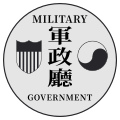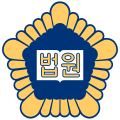.mw-parser-output .hidden-begin{box-sizing:border-box;width:100%;padding:5px;border:none;font-size:95%}.mw-parser-output .hidden-title{font-weight:bold;line-height:1.6;text-align:left}.mw-parser-output .hidden-content{text-align:left}@media all and (max-width:500px){.mw-parser-output .hidden-begin{width:auto!important;clear:none!important;float:none!important))You can help expand this article with text translated from the corresponding article in Korean. (May 2018) Click [show] for important translation instructions.
Machine translation, like DeepL or Google Translate, is a useful starting point for translations, but translators must revise errors as necessary and confirm that the translation is accurate, rather than simply copy-pasting machine-translated text into the English Wikipedia.
Do not translate text that appears unreliable or low-quality. If possible, verify the text with references provided in the foreign-language article.
You must provide copyright attribution in the edit summary accompanying your translation by providing an interlanguage link to the source of your translation. A model attribution edit summary is Content in this edit is translated from the existing Korean Wikipedia article at [[:ko:대한민국의 국장]]; see its history for attribution.
You may also add the template ((Translated|ko|대한민국의 국장)) to the talk page.
For more guidance, see Wikipedia:Translation.
| National Emblem of the Republic of Korea 대한민국의 국장 나라문장 | |
|---|---|
 | |
| Armiger | |
| Adopted | 10 December 1963 |
| Motto | 대한민국 (Republic of Korea) |
 |
| Part of a series on the |
| Culture of Korea |
|---|
| Society |
| Arts and literature |
| Other |
| Symbols |
|
The National Emblem of the Republic of Korea (Korean: 대한민국의 국장; Hanja: 大韓民國의 國章, lit. 'Republic of Korea national emblem') consists of the taegeuk symbol present on the South Korean national flag surrounded by five stylized petals and a ribbon bearing the inscription of the official Korean name of the country (Daehan Minguk), in Korean characters. The Taegeuk represents peace and harmony. The five petals all have meaning and are related to South Korea's national flower, the Hibiscus syriacus, or Rose of Sharon (Korean: 무궁화; Hanja: 無窮花, mugunghwa).
The emblem was announced on 10 December 1963.[1][2][3][4] The flower and taegeuk symbols are generally considered by South Koreans to be symbolic of the "Korean ethnos" (Korean: 한민족).[3]


















